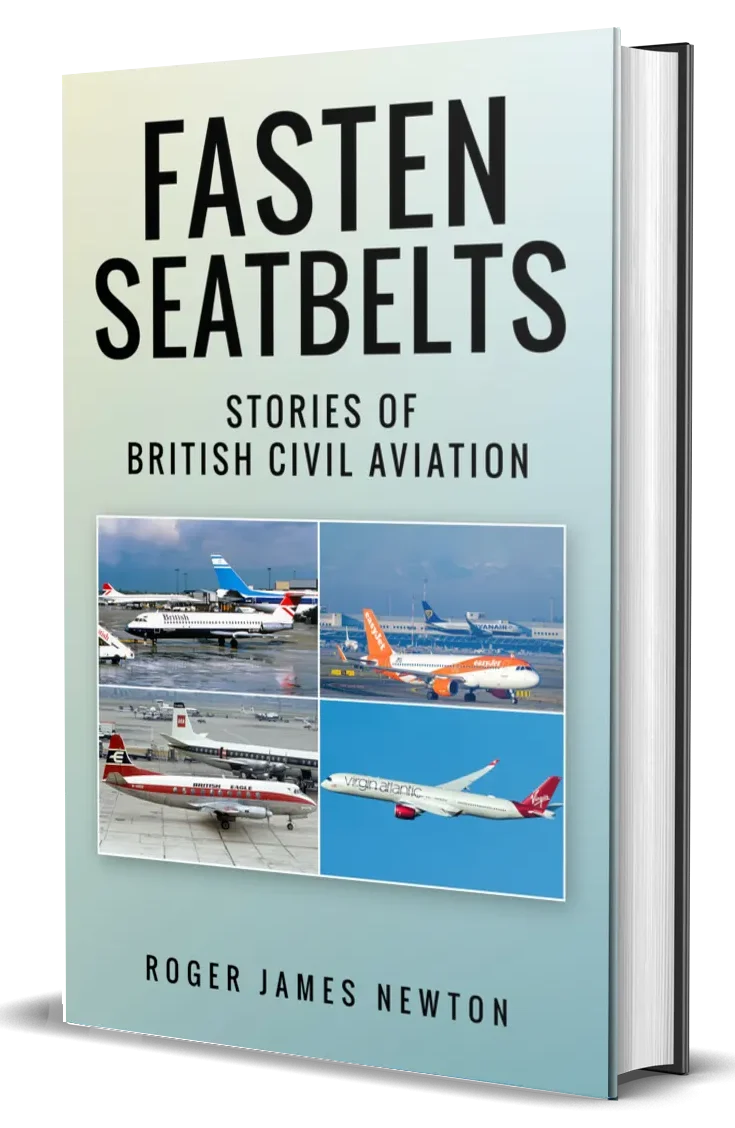The story of civil aviation in Britain did not begin with sleek jets or crowded airports. It began with war-surplus bombers, wicker seats, and small companies trying to turn the excitement of flight into a working business. In Fasten Seatbelts: Stories of British Civil Aviation, Roger James Newton takes readers back to 1919, when the Air Navigation Act opened the way for civilian services. What followed were the first tentative steps toward an industry that would grow into one of the pillars of global transport.

On 25 August 1919, the Handley Page Aircraft Company made history by flying a converted 0/400 bomber from Cricklewood to Paris. The aircraft beat the official first international passenger flight of the day by ninety minutes, carrying seven passengers in basic wicker seats without seatbelts. This image of adventurous but uncomfortable travel sets the tone for civil aviation’s formative years. Newton explains how these early flights were both experimental and symbolic, proving that flying across borders was possible.
At the same time, entrepreneurs like Frederick Handley Page and Holt Thomas were trying to build airlines from the ground up. Handley Page Transport offered regular services, while Thomas’s Aircraft Transport and Travel (AT&T) operated between London and Paris. The demand was there, as wealthy passengers were willing to pay high fares for the thrill of flying. But profits were scarce, as aircraft were costly to run, and even full passenger loads did not guarantee sustainability. AT&T eventually collapsed, showing how fragile the industry was in its infancy.
Other companies soon entered the field. Daimler Airway took over where AT&T left off, using more reliable and larger aircraft like the DH.34. Instone Air Line, created by a shipping company, began running services to Paris and Cologne. Their interest was partly driven by commercial self-interest—accelerating document deliveries between ports—but it also helped establish regular air routes. This overlap between shipping and aviation shows how existing industries influenced the growth of civil air travel.
The aircraft themselves were not glamorous. Many were military conversions, uncomfortable, noisy and often unheated. Passengers had to wrap up in heavy clothing, sometimes with helmets and coats loaned by the operators. Pilots often sat in open cockpits, exposed to the weather. Despite these conditions, the appeal of flying was undeniable. For the first time, people could cross the Channel in hours rather than a long day by ship and train.
Innovation was not limited to machines. In 1922, Instone Air Line became the first to introduce uniforms for pilots and staff. The idea was ridiculed at the time, but it showed a vision for professionalism and branding that is standard today. Marketing tactics were also developing. Some tickets included transport from the city center to the airport and then from the destination airport to the final stop. These small touches foreshadowed the integrated travel services common in modern tourism.
Newton points out that the industry faced serious challenges in these early years. Surplus aircraft were plentiful but unsuitable for long-term civil use. Manufacturers like Airco went bankrupt, while others like de Havilland reorganized to survive. The lack of government support and the uncertainty of passenger demand meant many companies failed. Yet stronger firms and more advanced aircraft slowly emerged from this difficult environment.
The importance of these formative years lies in the foundation they built. The routes established, the experience gained, and the public trust earned during the 1920s paved the way for the larger, more reliable airliners of the 1930s. It also laid the groundwork for the state-owned airlines that would dominate after the Second World War.
Fasten Seatbelts presents these stories with clarity and balance. Newton does not romanticize the struggles of early aviation, but he shows why they mattered. Each flight, each failed company, and each small innovation contributed to the growth of civil aviation. The air travel we now take for granted owes much to these pioneers, who turned war machines into passenger carriers and risky ventures into a lasting industry.
The beginnings of British civil aviation may look small compared to today’s global networks, but they were bold steps. They remind us that even the most advanced industries often start in modest, uncertain ways. Newton’s book captures that sense of origin and makes clear why those early years are still worth remembering. Head to Amazon to purchase your copy: https://www.amazon.com/dp/B0FR3L99F5